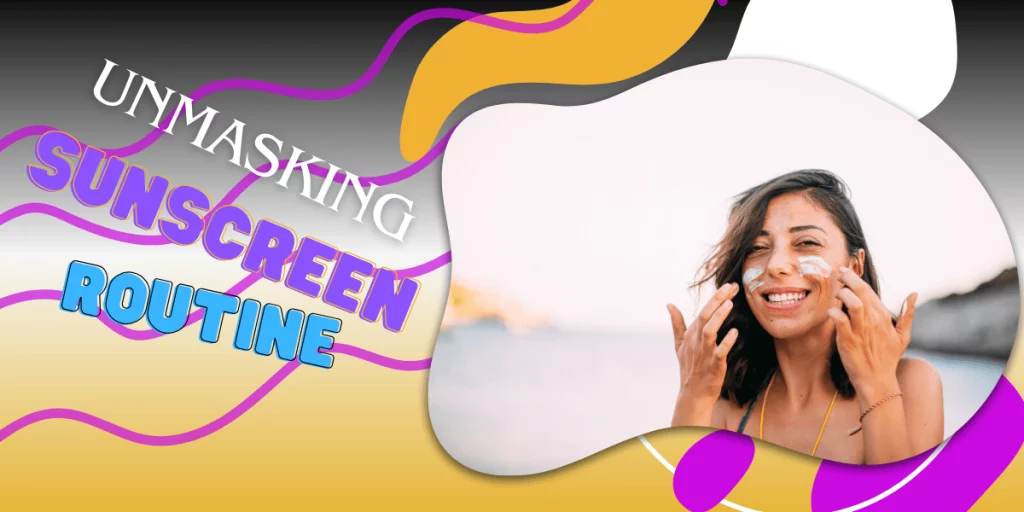Sunscreen is a crucial line of defense against the harmful effects of the sun’s ultraviolet (UV) rays. However, with so much information available about sun protection, it can be challenging to separate fact from fiction.
In particular, there are several myths surrounding the use of sunscreen that need to be debunked. One prevalent myth is that individuals with darker skin tones do not need to use sunscreen.
Contrary to popular belief, people with darker skin are still susceptible to sun damage and an increased risk of skin cancer. Another common misconception is that a higher SPF (sun protection factor) guarantees maximum protection.
While it is essential to choose a sunscreen with a high SPF, it is equally important to reapply it regularly and practice other sun-safe behaviors.
In this article, we will explore and debunk various sunscreen myths, providing you with the facts necessary for effective sun protection.
How we vet brands and products
When it comes to vetting brands and products, one of the key factors we consider is their ability to protect your skin from sunburn.
Sunburn can cause severe damage to the skin, leading to premature aging, wrinkles, and even increasing the risk of skin cancer. Therefore, we prioritize brands and products that have effective sun protection technologies.
We look for products with a high SPF (Sun Protection Factor), which indicates the level of protection they provide against harmful UV rays.
Additionally, we evaluate the ingredients used in the products to ensure they are safe and non-irritating. It is important for us to include brands that use high-quality sunscreen ingredients, such as zinc oxide or titanium dioxide, as they have proven to be highly effective in blocking UV rays.
Furthermore, we also consider customer reviews and feedback to gather information about the brand’s reputation and the effectiveness of their products.
By carefully vetting brands and products, we strive to ensure that you can trust and rely on them to protect your skin from sunburn and maintain its health.
10 sunscreen myths

There are countless myths about sunscreen that often lead to misconceptions about sun protection and skin damage.
One common myth is that using sunscreen with a high SPF rating provides all-day protection. In reality, sunscreen needs to be reapplied every two hours, as its effectiveness decreases over time.
Another one from 10 myths is that if it’s cloudy or cold outside, sunscreen is not necessary. However, harmful UV rays can still penetrate through clouds and cause skin damage. So sunscreen should be worn regardless of the weather.
Additionally, there is a belief that individuals with darker skin tones don’t need sunscreen. While people with darker skin have a natural higher sun protection factor. They are still at risk of skin damage and should use sunscreen to ensure proper protection.
Other myths include applying sunscreen only on exposed skin, the higher the SPF. The longer you can stay in the sun, and that water-resistant sunscreen doesn’t need to be reapplied.
It is crucial to dispel these myths to ensure people understand the importance of sun protection and the potential harm that can arise from ignoring it.
Myth: Sunscreen is not always necessary
There is a common myth that sunscreen is not always necessary. However, this myth couldn’t be further from the truth. Sunscreen is an essential part of any skin care routine, regardless of the weather or time of year.
The harmful ultraviolet (UV) rays from the sun can penetrate the clouds and cause damage to the skin. Leading to sunburns, premature aging, and an increased risk of skin cancer.
Using sunscreen with a high sun protection factor (SPF) is crucial as it helps to block both UVA and UVB rays. SPF acts as a shield for the skin, providing protection from harmful radiation. It is recommended to apply sunscreen generously and reapply every two hours, especially when spending extended periods of time outdoors.
The belief that sunscreen is unnecessary is not only a myth. Also, a dangerous misconception that can have severe consequences on one’s skin health.
Myth: You can’t get burned if it’s cloudy.
Many people believe that they cannot get burned if it is cloudy outside. This is just a myth. Even on cloudy days, sun exposure can still damage the skin and lead to sunburns.
The clouds may block some of the sun’s rays, but enough UV radiation still penetrates through to cause harm. It is important to protect ourselves from the sun’s rays, regardless of the weather conditions.
Using sunscreen with a minimum SPF of 30 is highly recommended, as it provides a higher level of protection against harmful UV radiation.
Sunscreen should be applied generously to all exposed areas of the body, including the face, neck, arms, and legs. Moreover, sunscreen use should not be limited to sunny days only. It should be a part of our daily skincare routine.
So, even if it’s cloudy, don’t be fooled into thinking that you are safe from sunburn. Take precautions and protect your skin by regularly applying sunscreen.
Myth: Higher SPFs give significantly more protection.

There is a common myth that higher SPF (sun protection factor). Sunscreens provide significantly more protection to our skin from the sun. While it is true that a higher SPF does offer more protection than a lower one, the difference in actual protection is not as significant as many believe.
The SPF only refers to the level of protection against UVB radiation. Which is responsible for sunburns and does not take into account UVA radiation, which can also cause skin damage.
Moreover, the increase in sun protection is not proportional to the increase in SPF. For example, an SPF 30 sunscreen blocks about 97% of UVB rays, while an SPF 50 sunscreen blocks about 98%, not a dramatically higher level of protection.
Additionally, wearing a high SPF sunscreen does not mean that we can stay under the sun for a longer period without reapplication. Sunscreens, regardless of their SPF, need to be reapplied every two hours to maintain their effectiveness.
Hence, it is important to understand that while higher SPF sunscreens provide better protection, the difference in protection is not as significant as the common myth suggests.
It is still essential to follow other sun safety measures such as seeking shade, wearing protective clothing, and avoiding peak sun hours to effectively protect our skin from the sun.
Myth: Sunscreen never goes bad.
There is a common myth that sunscreen never goes bad, but this is not entirely true. While sunscreen does have a long shelf life, it does eventually expire.
The effectiveness of sunscreen diminishes over time, especially when exposed to heat and sunlight. Most sunscreens come with an expiration date printed on the bottle. It is crucial to check and adhere to it.
Using expired sunscreen can lead to decreased protection against harmful UV rays, which can contribute to sunburns, premature aging, and even skin cancer. Another important factor to consider is the Sun Protection Factor (SPF) of the sunscreen.
The higher the SPF, the longer the protection lasts, but it does not necessarily mean that the sunscreen will never go bad. It is also essential to store sunscreen properly, away from direct sunlight and in a cool place.
To ensure maximum protection, it is recommended to reapply sunscreen every two hours, especially when engaging in outdoor activities or spending longer periods in the sun.
Overall, it is crucial to remember that sunscreen does have an expiration date. Also, using expired or improperly stored sunscreen may not provide the adequate protection needed.
Myth: Sunscreen is the only thing you need to protect yourself from the sun
One common sunscreen myth is that it is the only thing you need to protect yourself from the sun. While sunscreen is an important part of sun protection, relying solely on it is not sufficient.
Sunscreen works by absorbing or reflecting the harmful UV rays, but it does not provide complete protection. It is crucial to combine sunscreen with other measures to shield yourself effectively.
Wearing protective clothing, such as wide-brimmed hats and long-sleeved shirts, is essential to limit sun exposure. Seeking shade during peak sun hours, typically between 10 am and 4 pm. Can also minimize direct contact with the sun’s rays.
Additionally, sunglasses that provide adequate UV protection should be worn to safeguard the eyes and surrounding skin.
Another important factor is avoiding indoor tanning beds, as these can increase the risk of skin cancer even without sun exposure.
Furthermore, consistently monitoring your skin for any changes or new moles. Also, seeking professional evaluation is vital in detecting potential skin issues at an early stage.
Remember, while sunscreen is beneficial, it is not a standalone solution.
By adopting a comprehensive approach towards sun protection. You can significantly reduce the risk of sun damage and maintain the health of your skin.
